 |
Catherine and Sigolène met for the first time when they were sixteen years old in Paris, thanks to Sigolène's brother Christophe, who introduced them to each other after assuring them that they looked very much alike. At first glance, it was not obvious, but it was true. They shared the same penchant for eccentricity, the same desire to make everything themselves, and the same will to distinguish themselves by transforming what surrounded them, to better appropriate it. This was all the more surprising since they both attended classical high schools in rather conservative neighborhoods, where they both felt quite unique. |
 |
A few years later, in 1984, when Sigolène decided to study industrial design, Catherine, who was struggling to learn classical singing and was beginning to doubt her choice, followed her. The Ecole Nationale Supérieure de Création Industrielle wanted to train good designers, betting boldly on the autonomy and responsibility of the students. |
 |
In this broth, once the surprise was over, Catherine and Sigolène felt good. |
 |
From a laboratory, the workshop became a factory. All sticky with epoxy resin, breathing in its fragrance, they prayed that weather variations wouldn't compromise the mysterious polymerization process on which their honor depended. Fortunately, the School let them use its sanding machines and everyone gave them support and advice. The wager was taken up: the prize-giving ceremony took place, preceded by their appearance on stage to receive a giant check (in size, not in zeros). Alas, their joy was short-lived: as the trophies were being handed out to the winners, some were falling apart... Perhaps the glue was too fresh, or the weather too wet for it to set? |
 |
Encouraged by the example of friends who had charming costume jewelery made in small quantities by local craftsmen, they decided to follow the same path for their objects, deciding to put aside, at least momentarily, the idea that they were supposed to work for industry. They bought small tomatoes and other plastic dinosaurs and threaded them onto light bulbs, fashioned pockets (for jacket pockets) in the shape of birds, their crests studded with flower pistils, in their expensive velvet, soldered star and fish embossings on hairpins formed by themselves , and then took them to the gilder. They familiarized themselves with invoices, suppliers, and cost prices. Of course, they didn't pay themselves or count their hours, but they marveled at their work. |
 |
It was a sufficiently encouraging success that in September they started production of the April vase, of which they ordered fifty copies: a thousand glass tubes (made especially for them, to their dimensions) and a thousand pieces of metal, almost industrial quantities and a fairly reasonable cost price. They also had to think of a box, a text and explanatory drawings. As soon as they received their prototype (after a few months of harassing their suppliers who were not very interested in this story), they took their courage in all four hands and got an appointment with their favorite florist, Christian Tortu. They went there trembling, carrying their vase full of water and flowers in a mushroom basket on the subway. He immediately liked it and ordered their entire stock. They made the delivery and the next day, spent long minutes in front of his shop, contemplating their flowered vase by the one they admired so much, who, moreover, had placed in his window a small slate on which he specified that it was a creation of Tsé & Tsé associated. |
 |
Christmas It was the middle of December 1990. |
 |
They were less convincing when it came to selling, but it was nevertheless necessary to canvass shops. If Christian Tortu, in his impulse, had bought all their stock from them, there was still an exception. Some of them simply did not like their work and let it be known more or less nicely, (without managing to make them doubt it). Elsewhere, they were given a very small order, derisory, ridiculous, even after having shown a boundless enthusiasm. Above all, there were few places that suited their objects: they were not at ease in design galleries, too trendy, too precious. |
 |
The next day, he called them to order another one, as he had sold it. They came running, and they picked up the thread of the conversation they had started the day before. There followed a story at the Scheherazade: every day, for several months, he sold a vase, and they came back to deliver it to him. Each time, they discussed for at least an hour, their respective studies, the future of design, their admiration for Noguchi. They liked each other very much. |
 |
One winter day in 1993, a fax machine came out of their telephone machine. As never before, they worked out an educational scenography, large blackboards on which the objects were stapled. The April vase, for example, was dissected into pieces on one side and assembled on the other. Stumpy cutlery framed a fictitious plate and glass, sketched in chalk. Pierre had a small pool built so that the Floating Flower Buoys could navigate freely among the goldfish. Remembering that they had originally planned to sell the April vase by the meter, they had narrow shelves installed along the entire length of the display case and unrolled lengths of hinged tubes. The filling was perilous, but the zebra-flower display case was stunning. On the other side, they had hung a cluster of lazy vases, filled with flowering pear tree branches and rose-speckled fritillaries. It was the first time they had seen their objects presented in such profusion, and they themselves were dazzled by it. The driver of bus 76, which passed in the street, must have been too, as he slowed down in front of the gallery to admire the show and share it with his passengers. |

